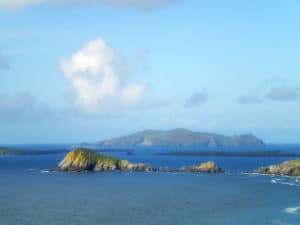Canada’s National Parks: Exploring Spectacular Natural Heritage

Updated On: March 18, 2024 by Maha Yassin
Spanning across a vast landmass and embodying the very essence of wilderness, the national parks of Canada offer an escape into the heart of nature. As gatekeepers to some of the world’s most pristine environments, these parks are a mosaic of diverse ecosystems, home to iconic wildlife and geological wonders. They serve as natural sanctuaries where the elements of earth, water, and sky converge, providing a backdrop for adventure and a living laboratory for conservation science.
Canada’s national parks are rich repositories of cultural significance for those seeking to immerse themselves in untouched landscapes or delve into human history. Each park is a refuge for myriad species of flora and fauna and a playground for outdoor enthusiasts. From the majestic Rocky Mountains to the rugged coastlines, the serenity of the forests, and the bustle of the animal kingdom, these parks represent Canada’s commitment to preserving natural heritage and facilitating a unique visitor experience.
The Majesty of Canada’s National Parks
Propelled by a reverence for the natural world, we find ourselves captivated by the vastness and diversity of Canada’s national parks. They stand as a testament to the country’s commitment to preserving the untouched beauty of our planet’s landscapes.
Exploring the Vast Landscapes
The national parks of Canada offer a mosaic of wilderness areas encompassing vast expanses of forests, towering mountain ranges, sprawling lakes, and the enigmatic stillness of glaciers and fjords. These landscapes are not just expanses of unspoiled beauty but are cradles of biodiversity that support many wildlife and ecosystems.
- Forests: Stretching across the continent, from British Columbia’s rainforests to Ontario’s deciduous forests, these lush green spaces offer an intimate experience with nature.
- Mountains: The majesty of the Rocky Mountains redefines awe, while the peaks of the Canadian Rockies remain a jewel in Canada’s crown of wild spaces.
- Lakes: Vast networks of pristine lakes, each a mirror to the sky above and a haven for wildlife, dot the territories, providing calm and nourishment.
- Glaciers and Fjords: The glaciers, those timeless landscape architects, and the deep-cut fjords speak of ancient natural processes still shaping the land.
One cannot overstate the profound impact of exploring such untouched environments. We compel travellers to witness these settings’ grandeur as we traverse this wild terrain. We invite you to discover the awe-inspiring natural beauty that gives Canada’s national parks their esteemed reputation. In this journey, the vitality of the natural world is palpable in every lookout and trail.
Iconic Wildlife of Canadian Parks
Canada’s national parks are sanctuaries for some of the most breathtaking wildlife on the planet. From the formidable moose to the elusive polar bear, species diversity is as vast as the landscapes they inhabit.
Species Diversity
In our national parks, wildlife enthusiasts can behold the grandeur of various species in their natural environments. Moose, dubbed the kings of the forest, are amongst the most sought-after sights for visitors. These majestic creatures reign throughout but are particularly populous in Gros Morne and Cape Breton Highlands National Parks.
Bears, including black and grizzly, roam freely in the park systems; spotting one is a thrilling experience that underscores the richness of Canadian biodiversity. Beyond bears, the country also provides refuge to polar bears, with Churchill in Manitoba being one of the best places in the world to witness them in their natural habitat.
Birds are equally prolific across Canada’s skies. The variety of avian life is exceptional, from the common loon to the rare peregrine falcon. Meanwhile, coastal parks offer different whale species sights, presenting spectacular marine observation opportunities.
Conservation Efforts
Conservation is pivotal in our endeavours to safeguard the wildlife that defines Canada. Parks Canada works tirelessly to protect the various ecosystems and ensure the survival of the species that call these parks home. Through research, monitoring, and reinforcing policies that mitigate human activities’ impact, the goal is to maintain a harmonious balance where wildlife can thrive.
Efforts are ongoing to preserve the natural habitats essential for polar bears, as climate change poses a significant threat to these majestic Arctic giants. Similarly, bear-proof storage containers and viewing distance enforcement contribute to the well-being of bears and visitors in our parks.
The same level of care is extended to our marine conservation strategies, where sanctuaries are created to safeguard whales and other marine life from threats such as shipping and fishing. When we visit these wonders of nature, we’re observers and guardians, ensuring that future generations can experience the awe that Canadian wildlife inspires.
Distinctive Ecosystems and Habitats

Canada’s national parks are a testament to the country’s diverse natural beauty, featuring a range of distinctive ecosystems and habitats. Each park serves as a sanctuary for the country’s wildlife and landscapes, ensuring the preservation of these natural treasures for generations to come.
Forests and Wetlands
Canada’s forests are home to an impressive biodiversity, playing host to a mosaic of tree species and wildlife. From the dense, coniferous stands of the boreal forest to the mixed woodlands of the southern regions, these forests provide critical habitats for countless species and act as vital carbon sinks.
In addition to the forests, wetlands form a crucial part of the Canadian ecological tapestry. These areas are teeming with life as habitats for amphibians, birds, and various plant species. Wetlands serve as natural water filters and are key areas for flood control, making them invaluable for both wildlife and human communities.
Mountains and Valleys
The majestic mountains of Canada are more than just awe-inspiring landscapes. They create unique ecological zones that differ greatly with elevation, leading to a rich variety of life adapted to the conditions at different heights. From the rugged peaks of the Rockies to the rolling valleys that cradle them, these habitats support species that are found nowhere else on Earth.
Valleys, carved out by ancient glaciers and rivers, present a contrasting environment where lush vegetation thrives and wildlife abounds. These fertile lands often serve as corridors for animal migration, ensuring connectivity between different ecosystems and allowing for the free movement of species across the landscape.
Geographical Marvels and Natural Wonders
We’re fortunate to have a country adorned with geographical marvels and natural wonders that draw enthusiasts from around the globe. The landscapes of Canada’s National Parks are majestic mountains, breathtaking waterfalls, and unique geological formations that capture the awe of all who visit.
Famous Peaks and Waterfalls
Kluane National Park is home to some of Canada’s highest and most majestic peaks, including Mount Logan, the highest peak in Canada. This park is a sanctuary where the Saint Elias Mountains meet the endless skies.
In Jasper National Park, you can witness the might of Mount Edith Cavell, named after a heroic World War I nurse. This imposing peak is a testament to the park’s rugged beauty, including the cascading Athabasca Falls, a force of nature that carves its way through the landscape.
Gros Morne National Park offers the spectacular sight of the Western Brook Pond fjord, flanked by dramatic cliff faces once carved by glaciers. This UNESCO World Heritage site boasts rock formations that speak volumes of Earth’s geological history.
Banff National Park’s icon is Moraine Lake, set in the Valley of the Ten Peaks, which echoes truly postcard-perfect beauty. The park also hosts the thunderous Takakkaw Falls, one of Canada’s tallest, highlighting Banff’s natural spectacle.
Human History and Cultural Significance

In this section, we explore the deep connections between Canada’s national parks and the rich tapestry of human history and cultures, particularly the ancestral ties of First Nations people and the formation of national park reserves.
First Nations People
Canada’s national parks occupy territories home to First Nations communities for millennia. Their profound relationship with the land is manifested in the countless historical sites, cultural landscapes, and spiritual places intrinsic to these parks’ wilderness. These territories highlight the sustainable living practices of First Nations peoples and their spiritual beliefs and traditions. For example, places like Gwaii Haanas National Park Reserve, National Marine Conservation Area Reserve, and Haida Heritage Site underscore the Haida Nation’s resilience and rich cultural heritage, formally recognised by UNESCO.
National Park Reserves
National park reserves are designated areas acknowledging that there are existing or outstanding land claims by First Nations. The objective is to manage these areas as national parks while respecting the rights of Indigenous peoples and negotiating settlements. These reserves are often created with provisions for cooperative management with the Indigenous groups involved, ensuring that the management and development of these territories align with traditional practices and conservation efforts. A notable example is the South Okanagan-Similkameen National Park Reserve proposal, which works closely with the Syilx/Okanagan Peoples.
Adventure and Outdoor Activities
In the National Parks of Canada, the array of outdoor pursuits promises unparalleled adventure amidst some of nature’s most splendid settings. From towering mountain peaks to crystalline waters, these activities are designed to immerse visitors in the heart of the wilderness.
Hiking and Camping
Hiking: The craggy trails of Canada’s national parks offer some of the planet’s most awe-inspiring hikes. Jasper National Park tempts with its rugged beauty and extensive trail network that caters to casual and seasoned trekkers. Journey through this park and experience the thrill of endless outdoor adventure.
Camping: For the ultimate communion with nature, camping within these pristine spaces is second to none. Whether it’s the tranquillity of a lakeside spot or the solitude of a backcountry escape, the parks’ varied campsites provide a chance to slumber under a sky teeming with stars.
Water Sports and Skiing
Water Sports: Embrace Canada’s vast expanse of lakes and coastlines by engaging in various water sports. From kayaking in the Pacific Rim to fishing in the Great Lakes, each park offers a unique set of water-based activities suited to novices and experts alike.
Skiing: Canada’s national parks become a powder paradise in the colder months. The thrill of skiing through the pristine wilderness of Banff or Jasper is an exhilarating way to explore these snowy wonderlands.
Flora and Fauna Spotlight

Within the vast expanses of Canada’s national parks, an eclectic mix of flora and fauna thrives, creating a mosaic of life that ranges from the microscopic to the monumental.
Unique Plant Life
One may find delicate orchids and hardy ferns in the understorey and openings in dense forest canopies. Still, a different assortment of vegetation prevails on the vast plains and along the rugged coastlines. Monarch butterflies, with their unmistakable orange and black wing patterns, traverse thousands of miles to grace Canada’s milkweeds—a crucial plant species in their life cycle. As they flutter through various habitats, these incredible insects tie together ecosystems across the continent.
- Milkweeds (Genus: Asclepias): Crucial for monarch butterflies.
- Orchids (Family: Orchidaceae): Found in forested regions.
- Ferns (Class: Polypodiopsida): Thrive in moist, shaded areas.
Birdwatching Paradigms
Canada’s national parks are significant birdwatching destinations, allowing enthusiasts to observe various avian species in their natural habitat. Along coastal areas and island parks, the Atlantic puffin stands out with its colourful beak and comical gait, serving as a draw for wildlife photographers and enthusiasts.
- Atlantic Puffins (Fratercula arctica): Nest along coasts; distinctive beaks.
- Waterfowl: Include species like ducks, geese, and swans.
- Raptors: Eagles and hawks soar above, completing the park’s avian diversity.
Whether navigating through dense forests to catch a glimpse of unique plant life or scanning the coastline for the vibrant beaks of puffins, Canada’s national parks offer an array of natural wonders to be discovered and cherished.
Conservation Science and Research

We recognise the pivotal role that conservation science and research play in understanding and managing the national parks of Canada. We focus on safeguarding biodiversity and maintaining healthy ecosystems through diligent study and application of scientific knowledge.
Wildlife Populations
We are committed to continuously studying wildlife populations within Canada’s national parks. Through rigorous field research, we gain insights into the distribution, health, and behaviour of species essential to our ecosystems. Techniques like environmental DNA (eDNA) allow us to efficiently monitor biodiversity and adhere to conservation goals without disturbing the natural habitats.
Remote technologies like wildlife webcams and cameras serve as non-intrusive tools to observe and collect data, providing us with real-time information on the movement and populations of various species. This approach is transformative for our research and engages the public, offering a window into the otherwise unseen lives of Canada’s diverse wildlife.
In specific regions like Banff National Park, targeted efforts to protect and restore ecological health are crucial. This large protected area, encompassing many habitats, is a focal point for conservation science. It represents a significant endeavour to monitor species and ensure populations thrive within their natural landscapes.
Our partnerships extend beyond our borders, exemplified by collaborations, such as the one with US and Mexican agencies, demonstrating our commitment to a unified approach to conservation. The agreement mentioned in a November 2023 news release highlights our active role in international conservation initiatives, which benefit species across North America.
Canada’s approach to conservation science emphasises the collection and analysis of data and the need for proactive measures to protect the integrity and viability of wildlife populations. Through meticulous research and collaboration, we remain at the forefront of efforts to maintain our country’s rich biodiversity for generations.
Visitor Experience and Amenities
When venturing into the National Parks of Canada, we’re graced with stunning natural beauty and a range of amenities that cater to various preferences and needs. From comfortable lodgings to convenient facilities, these parks ensure a memorable stay amidst the wilderness.
Lodgings and Facilities
Canadian National Parks provide diverse lodging options — from hotels and lodges comfortably nestled within the parks to more rustic and immersive backcountry lodges and huts. Parks Canada plays a pivotal role in managing these accommodations, focusing on preserving the natural beauty while providing comfort to visitors.
- Hotels: We find well-appointed hotels in numerous parks. These often feature amenities such as restaurants, spas, and guide services.
- Lodges: Scattered through the parks are lodges that offer a more intimate experience with nature, often including family rooms and dining services.
- Backcountry Lodges: For those seeking solitude, several parks offer backcountry lodges accessible only by foot, horseback, or ski. These lodges are perfect for a true wilderness experience.
- Huts: A more basic option, particularly favoured by adventurers, are huts — essential shelters providing the basics for hikers and climbers.
Parks Canada ensures the upkeep and availability of these facilities and guarantees they harmonise with the environment, often providing educational programs and resources that deepen the visitor experience. With these amenities, exploring the Canadian wilderness becomes not just about the adventure outdoors but also comfort and learning.
Photography and Wildlife Observation
Exploring the national parks of Canada offers a unique opportunity for photography enthusiasts and wildlife observers. The sprawling wilderness and diverse ecosystems provide a perfect backdrop for capturing stunning imagery and observing animals in their natural habitats. Whether armed with a camera or binoculars, the early hours of dawn and the soft light of dusk provide ideal times for wildlife activities.
Best Spots for a Camera
Northern Yukon: Capture the untouched essence of this vast and remote region. With wildlife webcams and remote cameras, catch a glimpse of the area’s natural beauty before visiting.
Réserve Faunique des Laurentides, Quebec: A treasure trove of bio-diversity, this reserve offers scenes of hilly terrain and lakes with the chance to photograph creatures like moose and beavers in the boreal forest.
Banff and Jasper National Parks, Alberta: Renowned for their majestic landscapes, you can spot and photograph various wildlife, such as bears, elk, and mountain goats, against the backdrop of the Canadian Rockies.
Wood Buffalo National Park, Alberta: Home to over 5,000 free-roaming wood bison, this is a unique location to observe and photograph these incredible creatures.
Torngat Mountains National Park, Labrador: For those seeking a rugged, remote photography adventure, this park offers the Inuit people stark landscapes and cultural significance. Its unique lighting conditions perfectly capture the wilderness and the occasional Northern Lights.
Remember to adjust your camera settings to the varying light conditions of dawn and dusk, and always respect the wildlife and habitat while observing or photographing. Our collective passion for the wild, paired with the right gear and respect for nature, enables us to capture the essence of Canada’s national parks without disturbing their natural rhythms.

FAQs
This section will address some of the most common queries regarding Canada’s national parks. We aim to provide concise yet informative insights into the wilderness and wildlife that these parks protect.
What are the top national parks in Canada for experiencing wilderness and wildlife?
Banff and Jasper National Parks in Alberta are renowned for their stunning landscapes and diverse wildlife. They’re joined by the Pacific Rim National Park Reserve in British Columbia, known for its coastal environment, and Pukaskwa National Park in Ontario, which offers a rugged wilderness experience.
Can you list Canada’s five largest national parks and what separates them?
The five largest national parks in Canada are Wood Buffalo National Park, known for its size and bison population; Quttinirpaaq National Park, which boasts remote Arctic wilderness; Nahanni National Park Reserve, with its spectacular canyons; Wapusk National Park, famous for polar bears; and La Mauricie National Park, which features a mix of forests and lakes. Each park preserves unique aspects of Canada’s diverse ecosystems.
How does the Canadian Parks and Wilderness Society contribute to national park conservation?
The Canadian Parks and Wilderness Society plays a vital role in the stewardship of Canada’s national parks. It advocates for protecting public lands and waterways and restoring ecosystems, and it works to safeguard wildlife populations.
Which national park is considered the most renowned in Canada, and what are its key attractions?
Banff National Park is arguably Canada’s most famous national park, attracting visitors with its iconic Lake Louise, the Icefields Parkway, and abundant wildlife.
How many national parks are there across Canada as of the latest count?
According to the latest data, 37 national parks and 10 national park reserves conserve the country’s natural beauty and biodiversity.
Could you provide an overview of the distinct ecosystems preserved within British Columbia’s national parks?
British Columbia’s national parks preserve many ecosystems, from the coastal rainforests in Pacific Rim National Park Reserve to the alpine meadows of Glacier National Park and the semi-arid grasslands found in Kootenay National Park. Each park maintains a complex web of life, contributing to Canada’s ecological variety.






